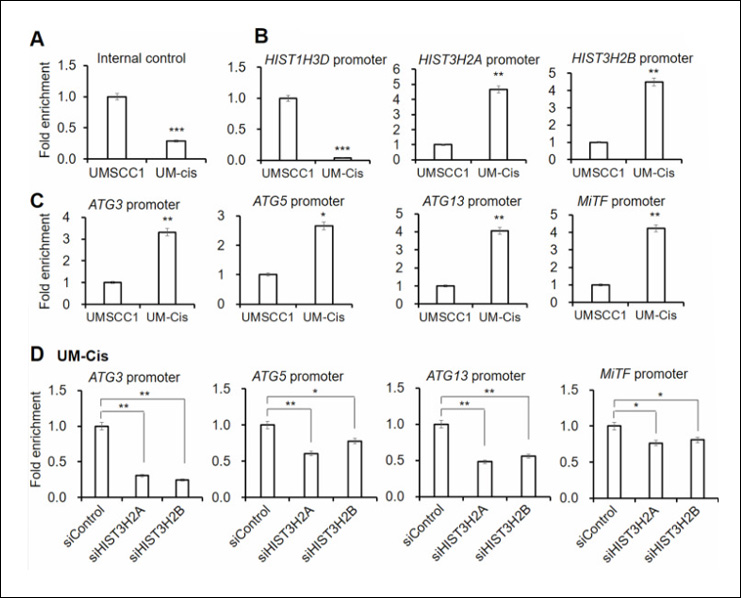Wang Y et. al. (December 2024). The m6A demethylase ALKBH5 is a novel epigenetic regulator of aortic valve calcification Cardiovasc Res.
This study investigates the role of ALKBH5, an m6A RNA demethylase, in calcific aortic valve disease (CAVD). Reduced ALKBH5 expression in calcified valves led to increased m6A levels, promoting valve interstitial cell (hVIC) calcification via TGFBR2/SMAD2 signaling. ALKBH5 overexpression reduced calcification, while its silencing had the opposite effect. The m6A reader protein YTHDF1 further contributed to calcification. These findings identify ALKBH5 as a key epigenetic regulator in CAVD.
Products Used: EpiQuik m6A RNA Methylation Quantification Kit (Colorimetric)
Liu Z et. al. (December 2024). METTL3 improves the development of somatic cell nuclear transfer embryos through AURKB and H3S10ph in goats Int J Biol Macromol. 286:138546.
This study explores the role of METTL3, an m6A methyltransferase, in improving the development of somatic cell nuclear transfer (SCNT) embryos in goats. SCNT embryos often face developmental arrest before zygotic genome activation (ZGA), partly due to karyokinesis defects. METTL3 overexpression rescued these abnormalities, enhanced embryonic development, and increased blastocyst formation rates. Mechanistically, METTL3 improved maternal mRNA degradation, promoted AURKB translation, and increased H3S10 phosphorylation, ensuring proper karyokinesis. These findings underscore METTL3’s critical role in SCNT efficiency and m6A's importance in embryonic development.
Products Used: EpiQuik m6A RNA Methylation Quantification Kit (Colorimetric)
Feng S et. al. (December 2024). Exercise promotes skeletal muscle growth in adolescents via modulating Mettl3-mediated m6A methylation of MyoD in muscle satellite cells Cell Mol Biol Lett. 29(1):150.
This study examines how exercise promotes skeletal muscle growth in adolescents through Mettl3-mediated m6A methylation of MyoD in muscle satellite cells (MuSCs). Exercise increases Mettl3-mediated m6A methylation, stabilizing MyoD mRNA, which enhances muscle growth. The study shows that Mettl3 regulates MyoD expression and myogenesis in MuSCs. Additionally, the methyl donor betaine boosts MyoD expression and muscle growth by increasing m6A levels. These findings highlight m6A's role in muscle development and suggest potential strategies for promoting adolescent muscle growth.
Products Used: EpiQuik CUT&RUN m6A RNA Enrichment (MeRIP) Kit
Sundrani D et. al. (December 2024). Placental expression and methylation of angiogenic factors in assisted reproductive technology pregnancies from India Epigenomics. :1-11.
This study investigates angiogenic factor gene expression and DNA methylation in the placentae of Indian women who underwent assisted reproductive technology (ART). The results show higher expression of FLT-1 and KDR, increased global DNA methylation, and lower VEGF promoter methylation in ART pregnancies. Maternal plasma folate and vitamin B12 levels were also elevated in ART women. These findings suggest that ART is associated with altered angiogenic factor expression and DNA methylation, potentially influencing pregnancy outcomes.
Products Used: MethylFlash Global DNA Methylation (5-mC) ELISA Easy Kit (Colorimetric)
Ren X et. al. (December 2024). BRG1 improves reprogramming efficiency by enhancing glycolytic metabolism Cell Mol Life Sci. 81(1):482.
This study explores the role of BRG1 in enhancing the efficiency of induced pluripotent stem cell (iPSC) generation by promoting glycolytic metabolism. The results show that BRG1 upregulates pluripotency-related factors and boosts glycolysis, increasing glycolysis-related metabolites and enhancing the transcription of key glycolytic genes. BRG1 also activates the PI3K/AKT signaling pathway, which is critical for reprogramming efficiency. Inhibition of PI3K/AKT signaling or glycolysis impairs iPSC generation, but overexpression of BRG1 rescues these effects, suggesting that BRG1 improves iPSC generation by facilitating glycolytic reprogramming via the PI3K/AKT pathway.
Products Used: EpiQuik Chromatin Immunoprecipitation (ChIP) Kit
Xie K et. al. (December 2024). A conserved nuclear factor YC subunit, NF-YC3, is essential for arbuscule development Plant J.
This study examines the role of the nuclear factor YC subunit OsNF-YC3 in arbuscular mycorrhizal (AM) symbiosis and arbuscule development in plants. The knockout of OsNF-YC3 resulted in stunted arbuscule morphology and reduced phosphate accumulation, while overexpression enhanced mycorrhization and phosphate uptake efficiency. OsNF-YC3 is regulated by OsPHRs, which control phosphate starvation responses, and targets genes involved in arbuscule development, including the AM-specific phosphate transporter OsPT11. The study also reveals that OsNF-YC3 interacts with other NF-Y subunits, including OsNF-YA11, whose loss similarly impaired arbuscule development.
Products Used: EpiQuik Plant ChIP Kit
Tang Y et. al. (December 2024). MADS-box BSISTER transcription factors regulate stilbenes biosynthesis in grapes by directly binding to the promoter of STS48 Int J Biol Macromol. :138625.
This study investigates how BSISTER (BS) transcription factors, members of the MADS-box gene family, regulate stilbene biosynthesis in grapevines. Transcriptome and phenolic metabolome analyses revealed that VviBS1 and VviBS2 downregulate stilbene production. Further experiments identified VviSTS48 as the most highly expressed stilbene synthase gene, and demonstrated that VviBS1 and VviBS2 directly bind to its promoter to inhibit stilbene synthesis. These findings enhance our understanding of stilbene biosynthesis regulation in grapes, offering potential for metabolic engineering to control stilbene content.
Products Used: EpiQuik Plant ChIP Kit
Wang X et. al. (December 2024). Nitazoxanide alleviates experimental pulmonary fibrosis by inhibiting the development of cellular senescence Life Sci. 361:123302.
This study explores Nitazoxanide (NTZ) as a potential treatment for idiopathic pulmonary fibrosis (IPF). NTZ inhibited cellular senescence in in vitro and in vivo models, alleviating fibrosis. It works by blocking the PI3K pathway, preventing the degradation of SIRT1, a key protein in senescence. These findings suggest NTZ could be a therapeutic approach for IPF by targeting senescence.
Products Used: Epigenase Universal SIRT Activity/Inhibition Assay Kit (Colorimetric)




 Cart (0)
Cart (0)













